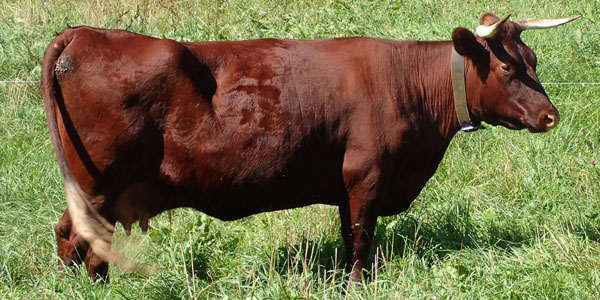
Apples of North America
Apples of North America is a comprehensive guide to the all-American fruit, with detailed descriptions and photos of 192 varietals, and information for gardeners, growers, and cooks alike. With each variety is a history, interior description, exterior description, tree characteristics, disease resistance, season or ripening, uses, and storage quality. Below are some excerpts and photos directly from the pages of this wonderful tome!
On the Freedom variety:
Freedom has been called the ugly duckling of disease-resistant apple varieties. But that shouldn’t detract from its many merits. These include the freedom from apple-scab infection for which it was named, a high rate of productivity, and an ability to serve as a good pollinator for its more attractive sibling, Liberty.
History: The sister apple of the Liberty, Freedom was developed from crosses of Mancoun, Antonovka, Golden Delicious, and a named cross of Rome in 1959 at the New York State Agriculture Experiment Station in Geneva. It was distributed for field testing in 1970 and introduced as a patented variety 1983.
On the Newton Pippin variety:
March or April, just as the last of these apples were coming out of winter storage, was when my father often remarked that we should have just started to eat them: the long storage time imbued the remaining ones with an extraordinary taste that lingered on the tongue. Cider made from the fruit is very clear and considered to be of the highest quality. The Burfords referred to it as “Sunday cider.”
Exterior Description: This variety’s appearance (and taste) is influenced to a certain extent by soil and whether conditions. Size and color vary, but it is usually medium to large and solid green (ripening to yellow or greenish yellow) with a reddish blush and a scattering of small russet dots on the surface. Some russeting may be present within and out of the stem cavity. It has a roundish, flattened, angular shape and a short stem.
On grafting apple trees:
 The first question one might ask is: why graft? The simple reason is that apple seeds, when allowed to naturally develop into trees, will not produce the same desirable fruit from which they came. The only way to reproduce a variety is by duplicating or cloning it, which means taking a cutting and grafting it onto another rootstock. Aside from starting a new tree, grafting also facilitates changing the variety on a tree (topworking), putting pollinator limbs on pollen-sterile varieties, producing tree designs (like espaliers), and repairing damaged trees.
The first question one might ask is: why graft? The simple reason is that apple seeds, when allowed to naturally develop into trees, will not produce the same desirable fruit from which they came. The only way to reproduce a variety is by duplicating or cloning it, which means taking a cutting and grafting it onto another rootstock. Aside from starting a new tree, grafting also facilitates changing the variety on a tree (topworking), putting pollinator limbs on pollen-sterile varieties, producing tree designs (like espaliers), and repairing damaged trees.







